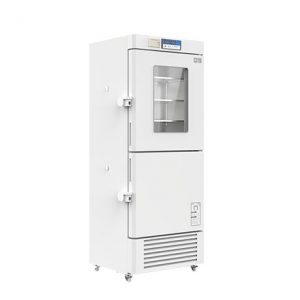4 Steps to Handle a Temperature Excursion
Every medical professional knows the importance of appropriate vaccine storage and handling, especially in terms of maintenance of recommended temperature. As per the CDC, a temperature excursion is ‘Any temperature reading outside ranges recommended in the manufacturers’ package’.
Temperature excursions can occur due to a variety of factors, such as malfunction in the storage unit, long power outages, unit door being left ajar and so on. These excursions can take a toll on the potency of the vaccines, leaving them ineffective.
In situations wherein a temperature excursion is observed, it is important to take corrective actions. These actions can avoid further damage to the lives of the patients due to ineffective vaccines.
Listed below are 4 important steps recommended by the CDC in cases where a temperature excursion of a vaccine storage unit is detected.
Notifying the In-Charge
As soon as an excursion is detected, the immediate supervisor needs to be notified about it. It is recommended for each institution to appoint a Vaccine Coordinator who is tasked with ordering vaccine, maintaining vaccine inventory, and also handling vaccine expiry or damage.
It is the duty of the vaccine coordinator to take necessary steps to avoid further damage by contacting the manufacturer regarding the excursion. They would also be responsible for ensuring that the other staff is notified to not use the potentially damaged vaccine. Even though the vaccine may seem damaged, it should be stored within the unit itself and not be discarded before confirming the course of action with the manufacturer.
Documenting the Excursion
All important details related to the temperature excursion such as the date and time when the excursion occurred, the temperature of the excursion, room temperature, name of the person reporting, description of the event, the length of time of the excursion (if a DDL was being used), inventory of the vaccines affected by the excursion, list of other items placed in the unit, problems with the unit and other information that may be relevant.
Contacting the Manufacturers
As mentioned previously in the first step, the vaccine coordinator would be tasked with informing either the representatives of the immunization program or the manufacturers regarding the excursion. This needs to be done only after the second step is thoroughly completed so that an accurate account can be given, and appropriate guidance can be received from the authorities.
Taking Corrective Steps
Based on the suggestions provided by the manufacturer or the respective authorities, certain corrective steps need to be taken. Basic steps could include checking the power supply, the functionality of the door of the unit and the thermostat settings. The alarm system should not be turned off in case of repeated alarms until the source of the excursion is identified and corrected.
The organizational SOP as well as CDC’s Storage and Handling Toolkit can be used for guidance when it comes to appropriate handling of a temperature excursion.
Having a dependable vaccine storage unit ensures the possibility of lesser temperature excursions. The refrigerators and freezers at Aegis are sturdy, ensure even temperatures and come equipped with an alarm system that notifies users immediately in case of a temperature excursion. Call us on 1-800-796-2344or write to us at support@aegisfridge.com if you wished to know more about our products.
Source:
https://www.cdc.gov/vaccines/hcp/admin/storage/downloads/temperature-excursion-508.pdf



